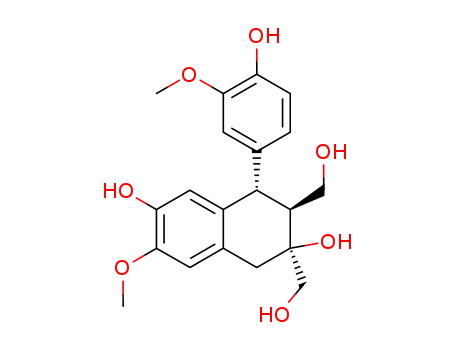Multi-step reaction with 14 steps
1.1: lipase acrylic resin / toluene / 40 °C / Molecular sieve; Enzymatic reaction
2.1: triethylamine / dichloromethane / 0.5 h / 0 °C / Inert atmosphere
3.1: Grubbs catalyst first generation / dichloromethane / 2 h / 40 °C / Inert atmosphere
4.1: copper(l) iodide / tetrahydrofuran / 1 h / -78 °C / Inert atmosphere
4.2: 1 h / -78 °C / Inert atmosphere
4.3: 0.17 h / 0 °C
5.1: lithium diisopropyl amide / tetrahydrofuran / 1 h / -78 °C / Inert atmosphere
5.2: 1 h / -78 °C / Inert atmosphere
6.1: triethylsilane; boron trifluoride diethyl etherate / dichloromethane / 2 h / 0 °C / Inert atmosphere
7.1: 4-methylmorpholine N-oxide; osmium(VIII) oxide / acetone; water / 8 h / 20 °C
8.1: periodic acid / tetrahydrofuran / 1 h / 0 °C
9.1: sodium tetrahydroborate / tetrahydrofuran / 1 h / 0 °C
10.1: sodium hydride / N,N-dimethyl-formamide / 1.5 h / 20 °C / Inert atmosphere
11.1: potassium hexamethylsilazane / tetrahydrofuran / 0.67 h / -78 °C / Inert atmosphere
11.2: 1 h / -78 °C / Inert atmosphere
11.3: 20 °C / Inert atmosphere
12.1: diisobutylaluminium hydride / 0 °C
13.1: triethylsilane; boron trifluoride diethyl etherate / dichloromethane / 0.17 h / 0 °C / Inert atmosphere
14.1: palladium(II) hydroxide; hydrogen / methanol; ethyl acetate / 4 h
With
Grubbs catalyst first generation; triethylsilane; sodium tetrahydroborate; copper(l) iodide; osmium(VIII) oxide; lipase acrylic resin; boron trifluoride diethyl etherate; hydrogen; palladium(II) hydroxide; potassium hexamethylsilazane; sodium hydride; diisobutylaluminium hydride; 4-methylmorpholine N-oxide; periodic acid; triethylamine; lithium diisopropyl amide;
In
tetrahydrofuran; methanol; dichloromethane; water; ethyl acetate; N,N-dimethyl-formamide; acetone; toluene;
DOI:10.1021/acs.orglett.0c00773




